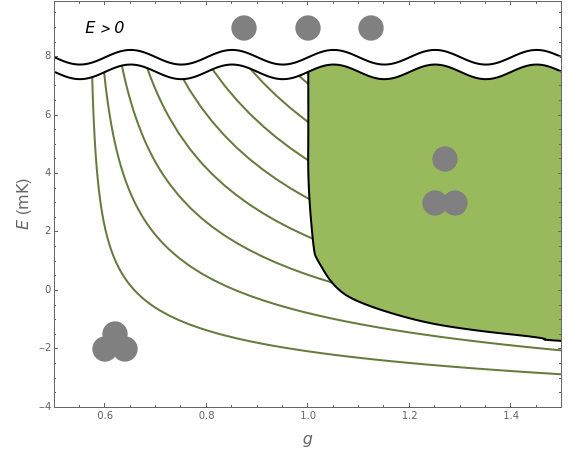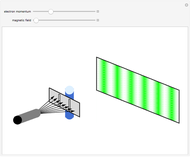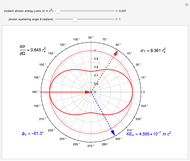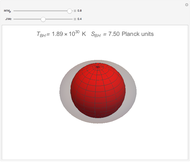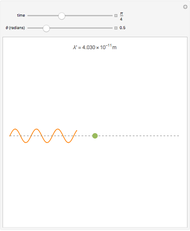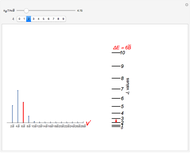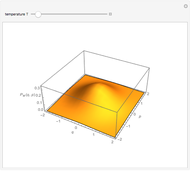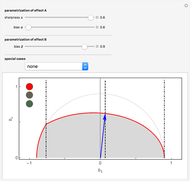Efimov Effect in Low-Temperature Trimers

Requires a Wolfram Notebook System
Interact on desktop, mobile and cloud with the free Wolfram Player or other Wolfram Language products.
V. Efimov [1] proposed in 1970 that a three-body system with very weak two-particle interactions can form strongly bound states if the two-particle scattering length becomes much larger than the range of the potential. In fact, if the two-body interactions approach zero, the number of resonant three-body states can approach infinity. The helium trimer  , first identified in 1977, has been believed to be such a three-body system. In the past two or three years, the field has exploded, with several heavier low-temperature atomic trimers, notably those containing
, first identified in 1977, has been believed to be such a three-body system. In the past two or three years, the field has exploded, with several heavier low-temperature atomic trimers, notably those containing  ,
,  ,
,  , and
, and  , having been verified to exhibit the Efimov effect [2].
, having been verified to exhibit the Efimov effect [2].
Contributed by: S. M. Blinder (March 2011)
Open content licensed under CC BY-NC-SA
Snapshots
Details
References:
[1] V. Efimov, "Energy Levels Arising from Resonant Two-Body Forces in a Three-Body System," Physics Letters, 33B(8), 1970 pp. 563–564.
[2] F. Ferlaino and R. Grimm, "Forty Years of Efimov Physics: How a Bizarre Prediction Turned into a Hot Topic," Physics 3(9), American Physical Society, Spotlighting Exceptional Research 2010.
[3] L. L. Lohr and S. M. Blinder, "Analytic Representation of the Efimov Effect in the Helium Trimer," Physical Review A 69(6), 2004 064102 pp. 1–4.
Permanent Citation
